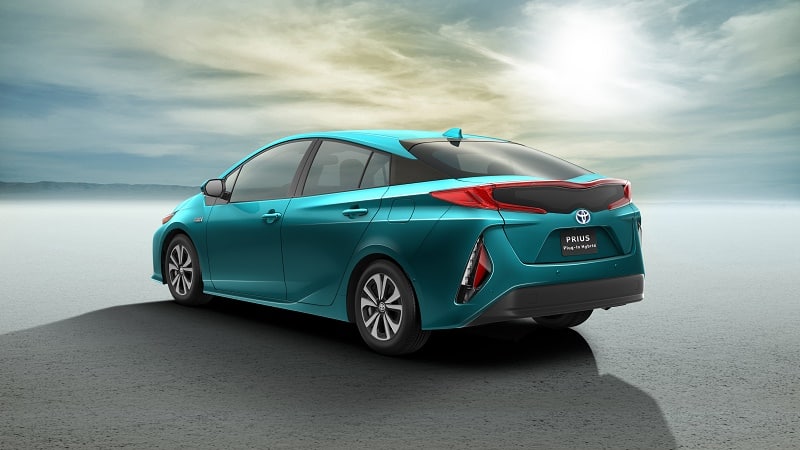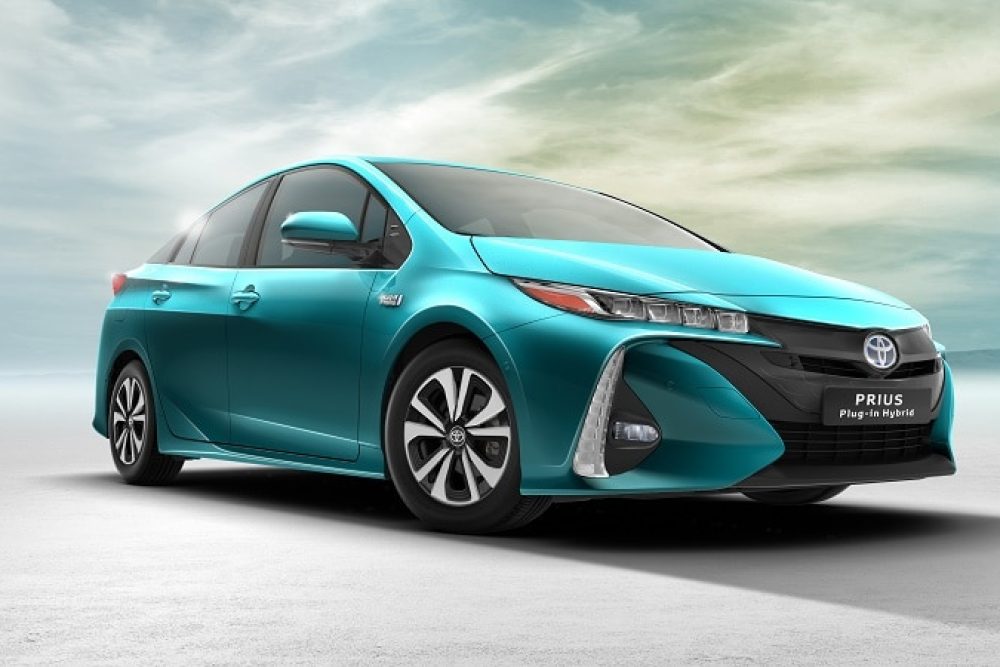New Prius Plug-in debut at New York Auto Show
- All-electric EV mode speed up to 84mph and range doubled, up to 31 miles
- Estimated average 202mpg, best fuel efficiency of any plug-in hybrid currently on market, with 32g/km CO2
- More precise and responsive handling
- Includes world’s first solar roof charging and gas injection heat pump aircon for use with EV mode
A HIGH-tech new Toyota Prius, second generation of the ground-breaking plug-in hybrid electric vehicle, makes its world debut at the 2016 New York International Auto Show.
It brings significant increases in its all-electric (EV) performance, in terms of driving range, power and maximum speed for real-world use and maximum tax advantages with just 32g/km CO2.
Toyota pioneered plug-in hybrid technology in Europe, paving the way for the introduction of the original Prius Plug-in in 2012 with a five-year vehicle leasing project.
The new model builds on the strengths of the latest generation Prius, introduced earlier this year. It marks an evolution of the responsive, intuitive, quiet and refined hybrid system that can be found in seven other Toyota models.
Ideal for customers who want a hybrid vehicle and the benefits of extended EV driving, the new Prius Plug-in will be available in UK showrooms from the end of this year.
EV Mode-enhanced Hybrid Synergy Drive
The new Prius Plug-in’s Hybrid Synergy Drive powertrain features a larger, 8.8kW/h lithium-ion battery pack, allowing drivers to enjoy the benefits of EV driving for longer periods and improving the potential driving range from a tank of fuel.
It posts a substantial improvement in fuel consumption compared to its predecessor, with an estimated average figure of 202mpg, the best rating for any current plug-in hybrid on the market, producing a CO2 figure of just 32g/km.
Even when not running in EV mode, Prius Plug-in will automatically favour its all-electric drive capability in situations where this can deliver higher efficiency than the petrol engine, most notably when driving around town and on shorter journeys.
The car is equipped with a Toyota-first dual motor/generator drive system, which uses both the electric motor and generator to produce drive torque, helping boost both acceleration and overall performance.
The new plug-in hybrid system further minimises use of the petrol engine, even when accelerating quickly or using the cabin heater, with the adoption of a new battery-powered heating system that improves efficiency in cold weather, and the world’s first heat pump air conditioning system with gas injection.
As a result of these advanced technologies, the new Prius Plug-in offers responsive, class-leading acceleration and can be driven at up to 84mph while still in EV mode.
The potential EV driving range is more than 30 miles, around twice that of its predecessor. Charging the battery should only take around two hours 20 minutes, in spite of its increased capacity.
The hybrid system’s 1.8-litre Atkinson cycle VVT-i engine also plays an important role in Prius Plug-in’s overall efficiency with improved thermal efficiency of 40%, a world-best figure for a mass-produced petrol engine.
Prius Plug-in’s Toyota New Global Architecture platform plays a defining role in its fun-to-drive quality, giving the car a lower centre of gravity and enabling a more engaging driving position to be set. Handling is more precise and responsive, with less body roll.
The new Prius Plug-in displays a chiselled profile and edgy character lines, and has a more road-hugging look and a lower centre of gravity. Compared to the current model, it is 165mm longer, 15mm wider and sits 20mm lower to ground.
Its 0.24 drag coefficient (Cd) is expected to be among the lowest of any production saloon, achieved with a number of advanced design features such as the “double bubble” tailgate glass and an automatic grille shutter which automatically closes when airflow is not needed to cool the radiator.
Weight has been kept to a minimum through extensive use of high-tensile steel in the bodyshell, aluminium for the bonnet and, in a first for a mass-produced car, a carbon fibre reinforced plastic (CFRP) tailgate.
Its status as an individual model within the Prius range is confirmed by a unique lighting signature, created with four-lamp LED projector headlights and LED tail lamps.
The interior captures the look and feel of a luxury coupe with its engaging driving position, high comfort levels and four-seat layout, built around a full-length centre console
The interior captures the look and feel of a luxury coupe with its engaging driving position, high comfort levels and four-seat layout, built around a full-length centre console.
The dominant centre cluster has a floating design, created using a sculpted, concealed rear mounting. The 8-inch touchscreen allows for easy operation of audio and navigation functions, including flick actions to scroll through the different displays.
The instrument cluster has dual 4.2-inch full colour TFT screens which display information with excellent clarity and sharpness. Their content can be changed using a menu control switch on the steering wheel.
Other features unique to the model include LED projector headlights with vehicle speed-sensitive adaptive beam technology. It also has a new solar roof charging system, with its own battery. This technology was first demonstrated on the Auris Hybrid Concept in 2010 and is now making its first appearance on a production Toyota.
Other features shared with the standard Prius include a wireless phone charging tray beneath the centre stack and a colour head-up display.
Toyota’s new Simple Intelligent Parking Assist will also be available, allowing automatic steering into parallel or series parking spaces and out of parallel slots.
Prius Plug-in will be offered with Toyota Safety Sense, equipping it with integrated active safety and driver assistance functions including a Pre-Collision System with Pedestrian Detection and Autonomous Emergency Braking; Lane Departure Alert with Steering Assist; Full-Speed Adaptive Cruise Control with full stop technology; and Automatic High Beam headlight operation. A Blind Spot Monitor and Rear Cross Traffic Alert will also be available.








